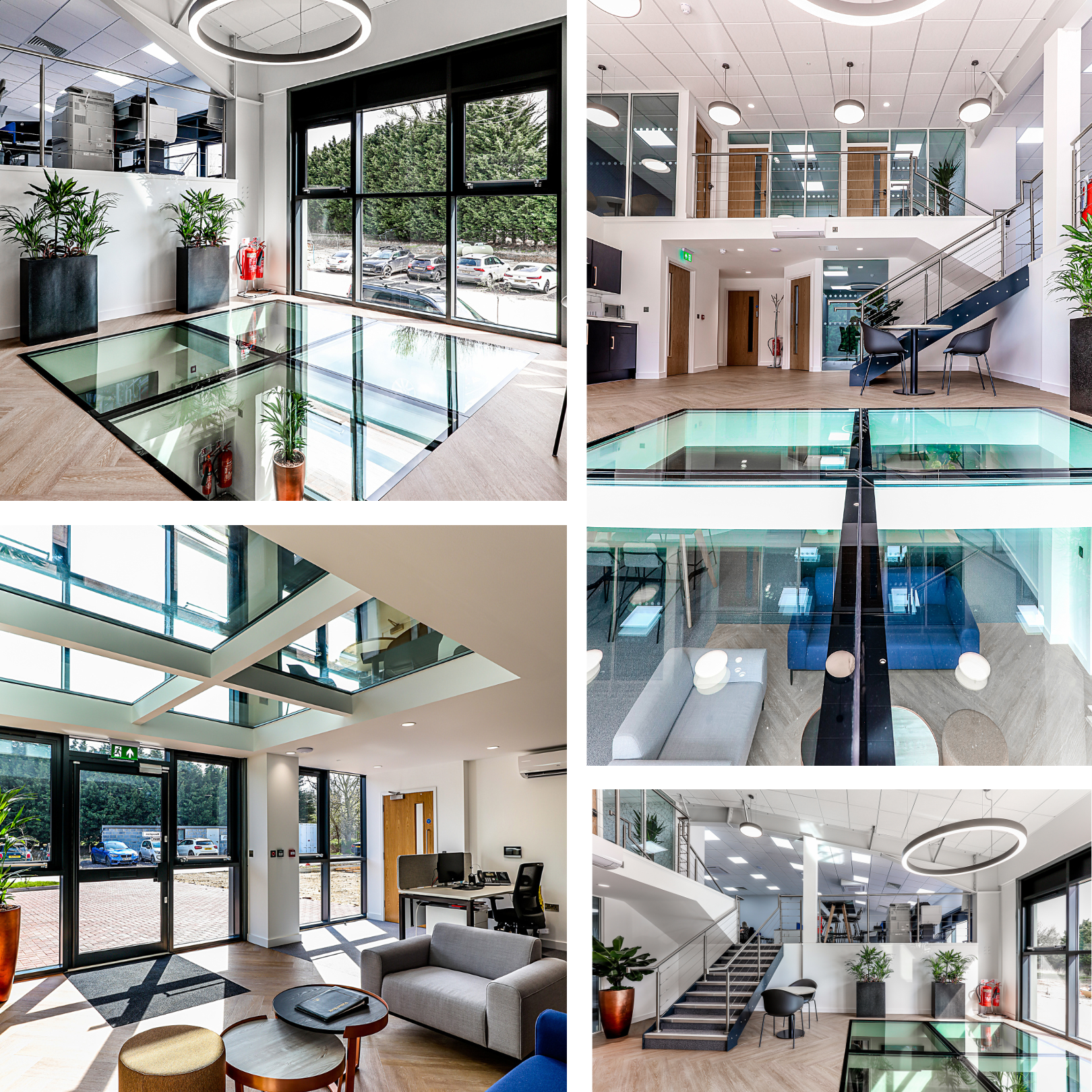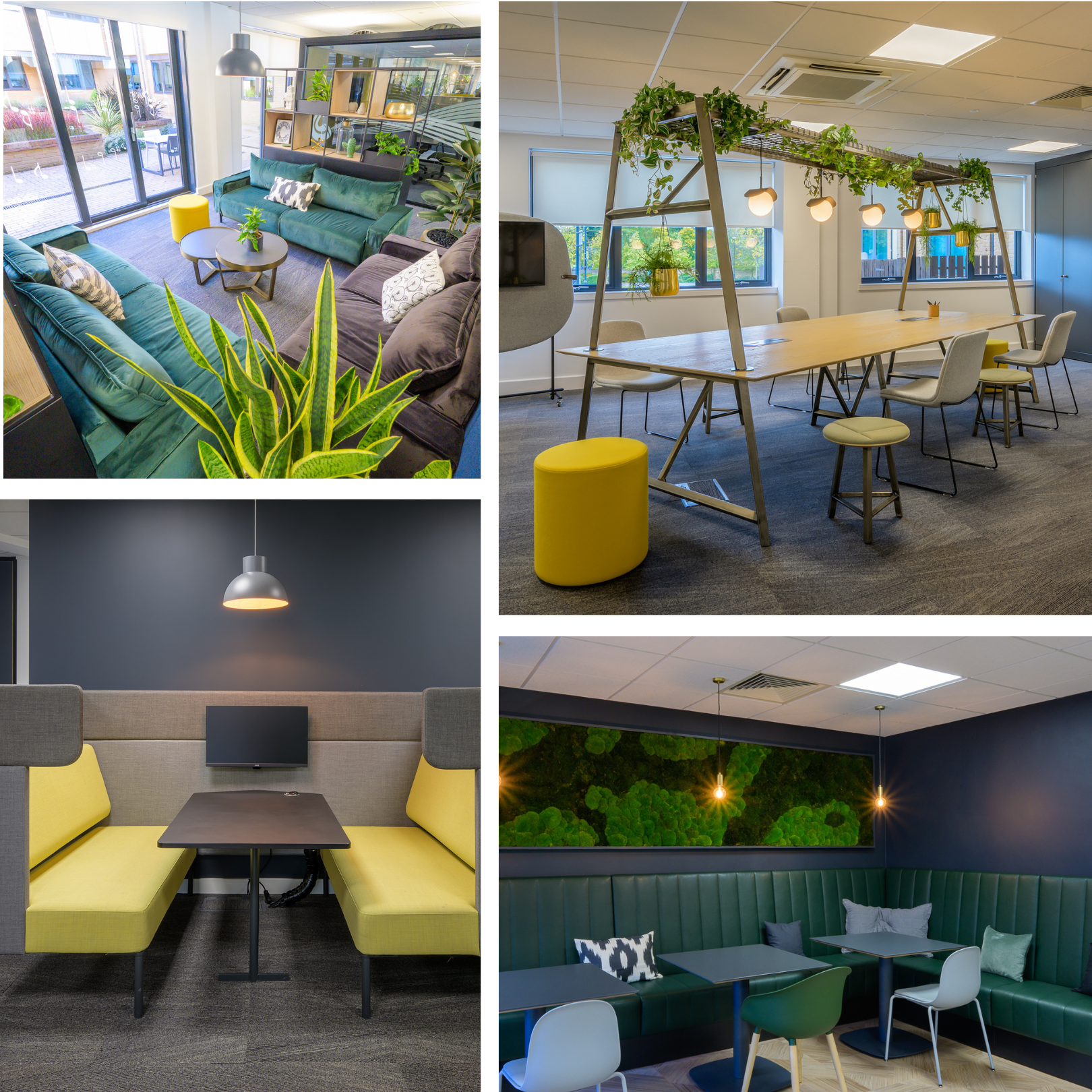Cast your mind back a few decades and ‘the office’ was predominantly a functional space, populated by industrious white-collar workers, sitting at carbon copy desks, below glaring fluorescent strip lights.
[We still shudder at the memory of those headache-inducing artificial lights!]
Staff would be expected to clock on and off – appraised on the number of hours they notched up at their desk, as opposed to overall performance. And woe betide the employee who had the gall to log off at the strike of five and shamelessly leave the office ‘on time’.
Thankfully, this regimented model has been drastically overhauled in recent years, with offices no longer viewed as staff ‘containers’. Instead, agile working spaces which promote social interaction and collaboration, are being created, which has meant a paradigm shift in the way we approach office design.
There is no doubt that the Covid-19 pandemic, which saw millions of people across Europe switch to home working has permanently altered our expectations of how an office should be designed.
Though WFH was an initial shock to the system, many people quickly noticed the benefits of remote working, from banishing laborious commutes to being able to incorporate wellbeing rituals into their days (a brisk Peloton ride around Central Park or a heart-pumping HIIT session over lunch!).
As a consequence, there’s been an increased demand for ‘hybrid working’, offering employees the flexibility to fulfil the 9 to 5 partly in an office and partly remotely.
Indeed, a recent report by management consulting company McKinsey showed that 76 per cent of European workers said they preferred to have some sort of hybrid working option.
According to The Economist, in a post-pandemic world, where hybrid working is becoming the norm, the office is no longer simply a bricks and mortar work location, but rather ‘a social destination’.
As such, offices of the future are likely to be planned and designed around human behaviour, with more focus on nurturing the wellbeing and comfort of staff. This could mean incorporating aspects such as:
With the dawn of hybrid working, the role of the office is clearly undergoing a seismic shift. But, what will the new working landscape look like?
Will the bulk of the job be completed at home, with the office dedicated to ‘face time’ (where colleagues can meet and reconnect)? It seems maybe not…
“The office remains central to the ecosystem of work,” say JLL Global Benchmarking Services and JLL Global Research in their recent report, Hybrid Work Decoded. “We know today that hybrid has a durable presence, but it has to be organised around the needs and preferences of employees. Spaces, technologies, support services, acoustics and working patterns all play a part in creating the right working environment,” they conclude.
Will banks of cubicles, individual desks and private offices be consigned to a skip, in favour of wide, open space and break-out zones?
Perhaps not entirely, but employers are going to have to think outside the box when briefing office designers to adapt to this new template, with the need for collaboration and employee wellbeing rising to the top of the agenda.
1. The office as a social destination
What will motivate a current employee to make the office pilgrimage or attract new talent to the business?
So, how does a business go about designing this sought-after space?
Our friends at Google, creators of ‘the happiest, most productive workplace in the world’ can offer some clarity. Whilst not all employers will be able to emulate Google’s wackiest designs (think office putting greens, vintage subway cars and revolving bookcases), the search engine giant does have some great ideas when it comes to office interior design.
A project with dynamic investment company, IQ Capital, saw COEL install table tennis and bats within the office environment to encourage staff to have some fun and engage with team mates on a non-work matter in a very corporate environment.

2 A focus on wellbeing at work
The wellbeing of its employees should be a top priority for employers, especially in a post-pandemic world. Happy, healthy employees are known to thrive in a positive, nurturing office environment. Investing in wellbeing leads to increased staff resilience, higher productivity, better employee engagement, and less sickness absence.
COEL worked with Bury St Edmunds-based building services contractor I-MEX (M&E) Ltd to create a purpose-built workspace incorporating floor to ceiling glazing, and a structural glazed floor, which flooded the foyer with daylight and adding a dramatic lustre to the entrance.

In another transformative project COEL created a dramatic kitchen in dark blue for Wren Therapeutics, with soft lighting and a biophilic display overhanging the table, plus privacy booths installed around the outside. These features created a calming space that was a soft antidote to the required clinical bright lighting and white features of the laboratories.
3. A Digital-First Design Approach
To support the new hybrid working model, businesses will need a strong digital-first culture to help keep employees productive, engaged and happy. This type of technology supports an increasing need for adaptable spaces in office design, capable of managing shared spaces and even tracking occupancy levels to adapt to usage needs.
4. Increasingly Flexible Office Design
With the traditional office model consigned to the architectural dustbin, there’s no longer a one size fits all solution to designing work spaces.
A commission for Cambridge-based Jazz Pharmaceuticals saw COEL create an agile new office, where versatility was key. Acoustic pods and meeting booths were installed for quieter time and meeting spaces; an enticing kitchen with central island was built to encourage socialisation; and a cosy enclave was fitted with plush sofas for peaceful contemplation.

5. Ergonomic Office Furniture Design
Why settle for a traditional swivel chair and table set-up when you can work your muscles and your grey matter at the same time using a treadmill desk? Now that’s the definition of multi-tasking!
Or, perhaps you prefer a standing desk for better back support on days that require hours of screen time? There is no doubt that the options for office furniture are evolving in line with our expectations for flexibility in office design.
COEL specialises in forward-thinking ergonomic furniture for the modern workforce, from stylish supportive office chairs to dynamic desk options.
Enterprising technology company Agile Analog recently asked COEL to fit out a workspace that supported a more collaborative style of working for their rapidly expanding workforce. This included thoughtfully curated furniture in enticing colour palettes such as open plan desks conducive to mind-mapping, softly furnished pouffes for relaxation, and a breakfast bar with high-backed stools for sociable mealtimes.

Our head of Sales and Marketing, Barnaby Clark, adds:
With hybrid working practices set to become the status quo, employers face many challenges when considering how to design their offices in line with this new flexible model, from embracing the latest digital technology to reconfiguring existing office space.
At the forefront of all these decisions will be the needs of the employees, and examining how these can be aligned with those of the business to ensure both continue to thrive.
One thing’s for sure, if the design of your office space can make adjusting to this new way of working just that little bit easier, then we’re all for harnessing the amazing possibilities of the office of the future (as long as those luminous strip lights aren’t included!).
Find out more more about how businesses can adapt their office designs to meet the changing demands of hybrid working by downloading our ‘Way we Work’ report here.